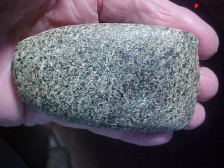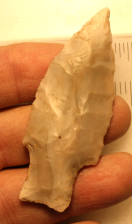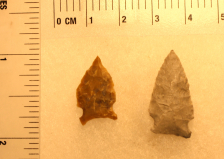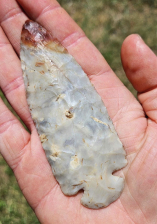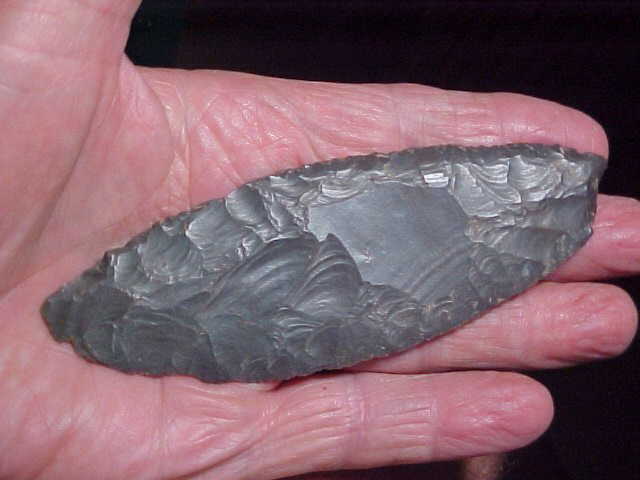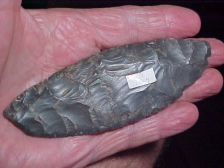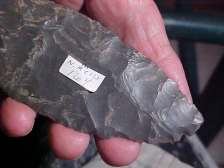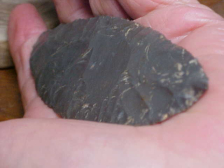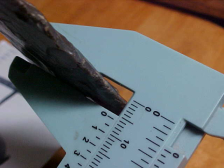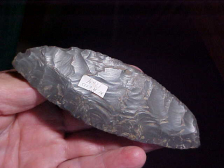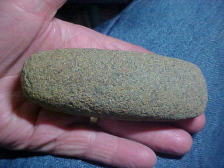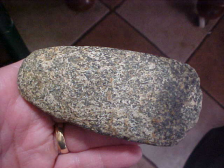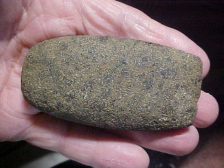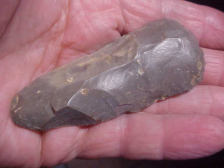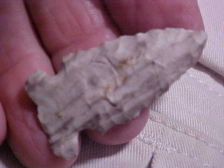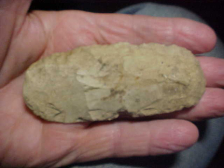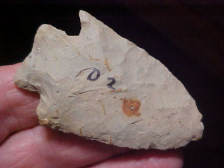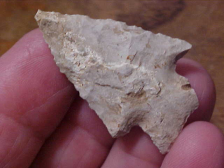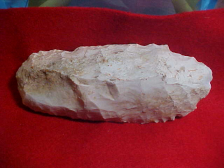Price:
$350.00
Status:
Available
Okay, see if the pictures live up to the title...I think they will. The Hornstone blade measures between 4&13/16" and 4&7/8", widest at nearly 1&11/16", but HERE is the measurement that's 'the kicker'---the single thickest spot (by caliper) barely goes over 1/4" If that doesn't tell you this was an ancient master of flint knapping, nothing will. Those extremely long flake scars you see were done by very few cultures. While there aren't duo-side notches, slight notching on one side only, I'm classifying the blade as an Early Ovoid, aka Perino Knife--at least that's the frame it occupies in my collection. Too, the patina is just too "old" for a Turkey Tail blade, and long flake scars that are Outre Pas (Late Paleo) flaking. Will 100% of collectors agree, no, but that's what opinions are: opinions. The piece was part of the Indian Hill Museum sell-off several years back, the Norman Reid Collection of Bone Gap, Illinois. Unlike most of his collection Norman didn't write provenance on the blade, but if it was like 90+% of his collection, Edwards or Wabash County, Illinois, was the area where it was found. The Hornstone is of an extremely high grade of Harrison County, Indiana, flint. Note that the 'tip' was notched to use as a buffing 'feature'--HEAVY use polish is felt. Too, the blade edges show both super fine secondary flaking and heavy cutting action: "work polish" is an understatement when you examine the smoothing of the flake scars. Every conceivable detail is guaranteed authentic. Shipping is $7.00, checks or money orders are the only ways I take payments. I do not use paypal--Roy A.
Disclaimer: Seller assumes all responsibility for this listing





